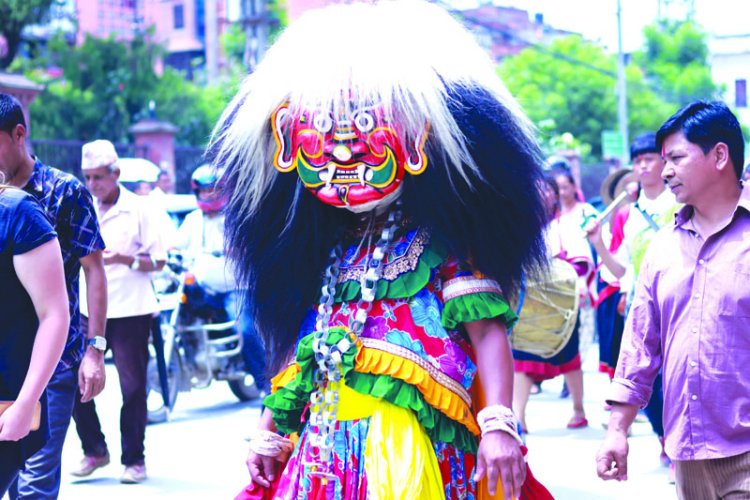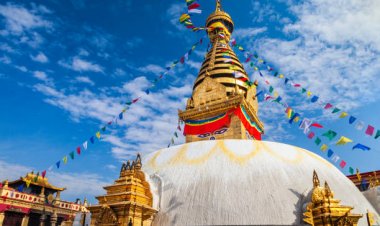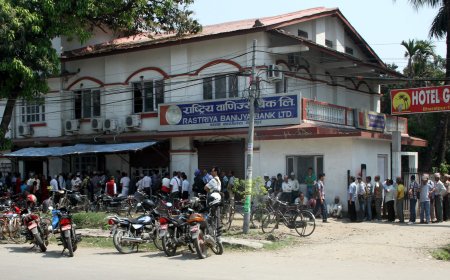Gaijatra : A festival celebrating life and laughter in Nepal
Discover Gaijatra: Nepal's lively festival blending humor, tradition, and community. Explore cow processions, satirical performances, and cultural diversity in this unique celebration.

Gaijatra, meaning "cow procession" in Nepali, is a traditional festival celebrated with exuberance and humor in Nepal. Rooted in ancient Hindu and Buddhist customs, this unique festival typically takes place in the Nepali month of Bhadra (August/September) and lasts for a week. Gaijatra holds cultural, religious, and social significance, blending satire, comedy, and a sense of community.
Origin and Significance:
Gaijatra's origins can be traced back to Nepal's medieval era and are closely linked to King Pratap Malla's (1641–1674) rule over the Kathmandu Valley. The king and his family suffered a personal tragedy that led to the creation of Gaijatra as a way to deal with grief. This is where the festival's roots can be found.
Historical records state that King Pratap Malla's young son passed away at a young age. The king was very worried about the queen's welfare because she was inconsolable in her grief. The king ordered that every family that had lost a member in the previous year take part in a procession to comfort his queen and cheer up the grieving household. Since cows are revered in Hinduism, the procession's leader was to be a cow, representing the deceased's soul's journey to the afterlife. The procession was to be accompanied by a variety of shows, dances, and comedic performances. The king wanted to make the grieving families' lives more enjoyable and humorous to lessen their sorrow. This particular fusion of joy and celebration served as the basis for Gaijatra.
Gaijatra developed over time beyond its original intention of providing comfort to grieving families. It gradually evolved into a larger cultural and social gathering where satire and humor were used to make social commentary on a range of topics, including political concerns, cultural practices, and social norms. This evolution kept the original meaning of Gaijatra—honoring the dead—while transforming it into a forum for social commentary and expression. Gaijatra has continued to be observed throughout Nepal's history, evolving to fit various contexts and eras while staying a cherished custom. It has developed into an annual occasion that highlights the cultural diversity, artistic creativity, and resilience of Nepal's people.
Festival Highlights:
The highlights of Gaijatra, the traditional Nepali festival of cow procession and humor, include a colorful array of cultural and social elements that make it a unique and vibrant celebration:
Cow Processions
Families who have lost a loved one during the past year participate in lively and colorful processions. The central figure of the procession is a decorated cow or a cow-shaped effigy, symbolizing the soul's journey to the afterlife.Satirical Performances
One of the most anticipated aspects of Gaijatra is the satirical performances. Participants dress up in elaborate costumes, often impersonating political leaders, celebrities, and other notable figures. These performances are meant to entertain the crowds and provide a humorous take on societal issues and current events.-
Humorous Skits and Parodies
Comedy and humor are at the heart of Gaijatra. The festival features skits, parodies, and theatrical acts that comment on various aspects of Nepali society, from politics and cultural norms to daily life and personal experiences. Cultural Diversity
Gaijatra is a platform for showcasing Nepal's rich cultural diversity. Different ethnic groups and communities contribute their unique traditions, dances, music, and costumes, adding to the festival's vibrant tapestry.-
Community Participation
Gaijatra fosters a sense of community and togetherness. Families and individuals from all walks of life come together to participate in the processions and performances, creating an atmosphere of unity and celebration. Social Commentary:
The satirical performances often tackle serious issues through humor. They provide a way for the community to address social, political, and cultural matters in a lighthearted yet thought-provoking manner.Creative Costumes and Makeup
Participants put significant effort into designing and wearing creative costumes and makeup that reflect their chosen characters or themes. This adds to the festive atmosphere and captures the attention of onlookers.Laughter and Joy:
Gaijatra encourages people to find joy and laughter even in times of loss and sorrow. It promotes the idea that humor can be a powerful tool for healing and bringing positivity to life.-
Traditional Dances and Music
The festival includes traditional dances and musical performances that celebrate Nepali culture and heritage. These performances add a cultural depth to the festival's festivities. -
Tourism and Cultural Exchange
Gaijatra's uniqueness has attracted tourists from around the world. This not only contributes to Nepal's tourism industry but also facilitates cultural exchange and cross-cultural understanding. Legacy and Tradition
Gaijatra carries forward centuries-old traditions while adapting to contemporary times. It serves as a reminder of Nepal's history, culture, and resilience.
Gaijatra is primarily celebrated in Nepal, specifically in the Kathmandu Valley and various other parts of the country. The festival is deeply rooted in Nepali culture and tradition and has been celebrated for centuries. While it is most prominent in the Kathmandu Valley, where the tradition originated, Gaijatra celebrations can also be observed in other urban and rural areas across Nepal.
In the Kathmandu Valley, which includes the capital city of Kathmandu as well as the surrounding cities and towns like Bhaktapur and Patan, Gaijatra is a major cultural event that draws significant participation and attention. The valley has a historical and cultural significance in Nepal, making it a central hub for traditional celebrations like Gaijatra. Throughout the years, the popularity of Gaijatra has led to its observance in other parts of Nepal as well, although the scale and customs may vary from region to region. The festival has managed to transcend geographical boundaries and remains an integral part of Nepali culture.
Gaijatra's history is intricately linked to a royal family's personal tragedy and the ensuing desire to cheer up the grieving. Gaijatra, with its unique blend of humor, satire, tradition, and community engagement, remains an important and cherished cultural event in Nepal. The festival not only honors the departed but also emphasizes the therapeutic power of laughter and unity, making it a remarkable celebration of life itself.
What's Your Reaction?





































































































